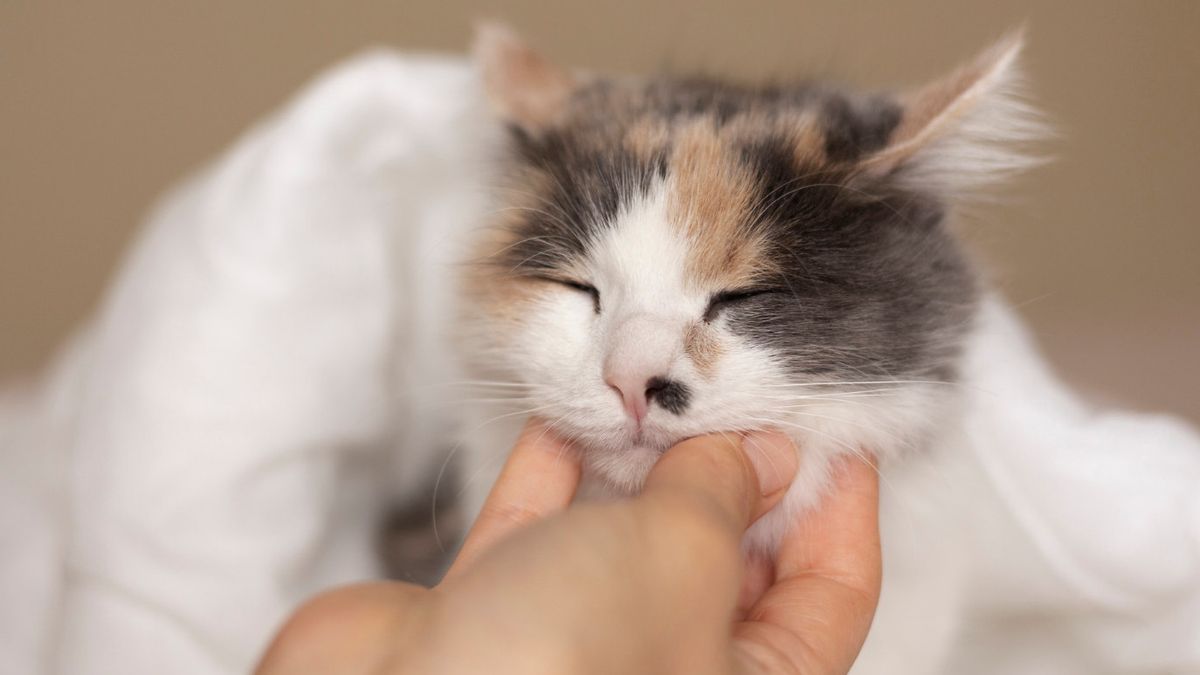YOGYAKARTA "Most cats like to spoil their chins and cheeks by their favorite people. But if anabul avoids it, he will definitely raise his eyebrows and leave. Maybe, because he feels uncomfortable on his chin. Try to check, if a black crust appears on the cat's chin, this is called acne feline.
Feline acne in cats is acne that grows around the chin and lips. According to certified veterinarian Michelle Piccione, DVM., DACVD. reported by Rover, Tuesday, February 28, cat acne looks like acne in humans. Initially it looked like a commodity commonly found under the chin. This case is relatively mild, and is recognized when you find it like a black crust on the cat's chin. Sometimes it's just like dirt in the hair. However, this acne needs to be addressed immediately so as not to infect and get worse.
Symptoms of the acne feline, among them, are found to be dirty, dark-grained on the chin. Cats like to scratch the lower part of the face which may also be related to meal or food allergies. Not infrequently, cats that have acne on their operating chins fall out, are reddish, and swollen. Well, because it is often scratched, it can grumble and irritation.
Meanwhile, cat acne is not life-threatening, says Piccione. But if you have secondary infection, it can be a disaster. How to treat it needs to get a recommendation from a veterinarian. For topical drugs, they are usually given antibiotic ornaments. Doctors will also prescribe a special shampoo to clean the dirt from their hair follicles.
For home medicine, veterinary dermatologist care for Almela, DVM., Ph.D., DECVD., recommend first consult a doctor. Maybe some home remedies can reduce redness, swelling, or lesion on the cat's chin. Almela provides advice, Epsom salt can be a natural medicine to clean up its fur follicles. In addition, you can look for products that contain benzoil peroxide or salicylic acid, then ask the veterinarian if it's safe to use in animals, Dr. Piccione advises.
Another way at home, omega-3 fatty acid supplements can reduce inflammation and mild healing in the case of cat acne. In addition, you can compress gently. But don't let the cat acne to avoid irritation and infection.
Feline acne may disappear on its own. But if the symptoms worsen, the favorite cat should be taken to visit the nearest veterinarian.
There are several triggers that cause acne in cats. But some things cannot be known, according to doctor Almela. Added Piccione doctors, cat acne is an idiopatic disorder from follicle lattinization. Basically, they are too many vulnerabilities or proteins found in the skin and are trapped in the follicles resulting in a comodo. Another cause, triggered by the following factors:
Based on the theory conveyed by doctor Piccione, cat acne is most often found under the chin because there are at most sebaceous glands. This gland produces and releases oil. Oil glands are produced to maintain the health of hair and skin. But if too much it can clog follicles.
Cats can also experience stress. Generally influenced by the quality of life of cats. But it can also be due to poor immune systems and skin health.
The researchers observed the outbreak of cat acne in shelters and households that kept more than one cat. Research shows there may be infectious viral components that play a role and cause black crusts to appear on the cats' chins.
Maintenance of cats requires commitment. Therefore, if they experience changing habits, for example because they are not healthy and stressed or without proper care, healthy oil produced by sebaceous glands can accumulate and form a commodity.
Allergies in cats can be caused by several things, such as food and contact allergies. Both are associated with the growth of acne in cats that appear on the chin.
Doctor Piccione suggested, there is no clear evidence of whether plastic food bowls can cause acne in cats. But it is important for cat owners to improve cleanliness and use steel or ceramic bowls to reduce the possibility of spreading secondary infections to acne areas on the cats' chins.
The English, Chinese, Japanese, Arabic, and French versions are automatically generated by the AI. So there may still be inaccuracies in translating, please always see Indonesian as our main language. (system supported by DigitalSiber.id)








